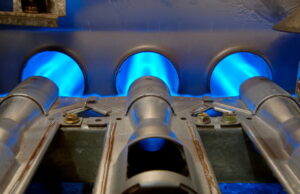Most homeowners know when something is going wrong with their furnaces. That’s because furnaces are helpful in that they let out warning signs when they’re struggling. Some of these signs include strange noises, weird smells, and decreased performance.
So what do most homeowners do when their furnace shows signs of suffering? Some people tend to put off calling for repairs as long as possible. When it comes to furnace repair there are some that definitely take priority over others. One of these is a cracked heat exchanger.
This isn’t a minor repair by any means and isn’t something you should try to handle yourself. A cracked heat exchanger in a furnace is a serious problem that needs to be addressed by an HVAC professional immediately. Let’s review the signs of a cracked heat exchanger so you can determine if you have one in your home and what to do about it.
Why Is a Cracked Heat Exchanger a Serious Issue?
A cracked heat exchanger in a gas furnace is a serious issue because it could be leaking hazardous gases into your home. To understand how this can happen, you need to know how a heat exchanger works.
Heat exchangers transfer heat from one place to another. They consist of metal shells and tubes that collect combustion gases from the burners. When a furnace burns natural gas or propane fuel, the by-products travel through the heat exchanger.
Air from the blower moves around the heat exchanger and picks up the heat before it passes into the ventilation system. The remaining combustion exhaust is then sent through a flue to escape to the outside air. If the metal parts of a heat exchanger crack, toxic combustion gases could enter the air being blown into your home.
How Will I Know If My Heat Exchangers Are Cracked?
You need to know the non-visible signs of a cracked heat exchanger because when cracks form, they’re invisible to the naked eye.
- Unusual Smells: The additives that utility companies add to gas will smell like rotten eggs or sulfur. You might also smell formaldehyde.
- Unusual Noises: Your carbon monoxide detector would go off. Other sounds to listen for include hissing, clicking, or rattling noises.
- Unusual Symptoms: You’re suffering from headaches, nausea, dizziness, or flu-like symptoms.
What Should I Do if My Heat Exchanger Is Cracked?
If your carbon monoxide detector is going off or anyone in your home is suffering from the symptoms of carbon monoxide poisoning, you’ll need to call emergency services before doing anything else. The next step is reaching out to a professional HVAC company such as ours for immediate repairs.
The Bottom Line
It’s essential to schedule annual maintenance to avoid this potential safety hazard. Although older furnaces are more likely to develop cracks in the heat exchanger, having us perform routine furnace maintenance every year can help avoid this problem.
Robbins Heating & Air Conditioning serves Colorado Springs and the surrounding area. Contact us 24/7 when you have a furnace emergency.

